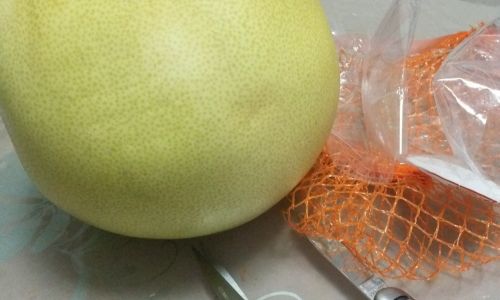Introduction: The Allure of Grapefruit and the Pith Predicament
Grapefruit, with its vibrant hue and tangy-sweet flavor, is a beloved citrus fruit enjoyed worldwide. Whether sliced into salads, juiced for refreshment, or incorporated into desserts, its versatility is unmatched. However, many home cooks and citrus enthusiasts encounter a common challenge: the bitter, fibrous white pith that clings to the flesh. While the pith is edible and even rich in antioxidants, its bitterness can overpower dishes, and its texture may detract from culinary presentations. This guide delves into the techniques, tools, and tips for effortlessly removing grapefruit pith, ensuring your recipes shine with pure, unadulterated citrus goodness.
Understanding Grapefruit Anatomy: Why Pith Matters
Before diving into peeling methods, it’s essential to grasp the structure of a grapefruit. The fruit comprises several layers:
- Flavedo (Zest): The outermost colored rind, prized for its aromatic oils.
- Albedo (Pith): The spongy white layer beneath the zest, rich in fiber but bitter.
- Segments (Vesicles): The juicy, pulp-filled pockets protected by thin membranes.
The pith’s bitterness stems from compounds like naringin, which, while beneficial for health, can dominate a dish’s flavor profile. By mastering pith removal, you gain control over taste and texture, elevating your culinary creations.

Tools of the Trade: Equipping Your Kitchen Arsenal
To peel grapefruit pith efficiently, gather these essentials:
- Sharp Chef’s Knife: A 6–8-inch blade for precise cuts.
- Paring Knife: For detailed trimming around segments.
- Serrated Utility Knife: Ideal for slicing through tough rinds without crushing flesh.
- Citrus Zester or Microplane: To remove zest before peeling (optional).
- Sturdy Cutting Board: Non-slip surface for stability.
- Bowl of Cold Water: To submerge peeled segments and rinse away residual pith.
Method 1: The Top-and-Tail Technique
Ideal for: Beginners, large grapefruits, or recipes requiring whole segments.
- Trim the Ends: Slice off ¼ inch from the stem and blossom ends to create flat surfaces.
- Stabilize the Fruit: Place one flat end on the cutting board to prevent rolling.
- Peel the Rind: Angle your knife to follow the fruit’s curve, slicing downward from top to bottom. Remove strips of peel and pith in vertical sections, rotating the grapefruit as you go. Aim to take off just the white layer without gouging the flesh.
- Check for Pith: After peeling, inspect the fruit. If specks of pith remain, use a paring knife to gently scrape them off.
Pro Tip: For thinner peels, use a serrated knife to “saw” through the rind, minimizing flesh loss.
Method 2: The Segmentation (Suprêming) Method
Ideal for: Garnishes, salads, or delicate desserts where pristine segments are key.

- Halve the Grapefruit: Cut crosswise to expose the flesh.
- Loosen Segments: Insert a paring knife between a segment and its membrane, slicing along both sides to release the wedge. Repeat around the fruit.
- Remove Membranes: As you free each segment, discard the membranes and any attached pith.
- Collect Juice: Save the leftover juice for dressings or cocktails.
Method 3: The Spoon Trick
Ideal for: Quick peeling with minimal tools.
- Score the Peel: Use a knife to cut a shallow circle around the grapefruit’s equator.
- Insert a Spoon: Slide the spoon between the flesh and pith, gently scooping to separate them. Rotate the fruit while applying pressure.
- Twist and Pull: Once the pith is loosened, twist the grapefruit halves to detach them.
Method 4: The Freeze-and-Peel Hack
Ideal for: Advanced users or stubborn pith.
- Freeze the Grapefruit: Chill the fruit for 1–2 hours to firm the flesh.
- Peel Under Running Water: The cold temperature and water help the pith slide off more easily.
Troubleshooting Common Challenges
- Sticky Pith: If the pith clings tenaciously, dip your knife in hot water to soften the fibers.
- Uneven Peels: Practice makes perfect—start with thicker slices and refine your technique.
- Flesh Waste: Use a grapefruit knife (a short, curved blade) to navigate tight angles.
Creative Uses for Grapefruit Pith and Peel
Don’t discard the pith and zest! These byproducts offer culinary and practical applications:

- Marmalade: Simmer pith and peel with sugar and water for a bittersweet spread.
- Cocktail Garnishes: Dehydrate zest strips for aromatic twists.
- Cleaning Agent: Rub the peel’s inner side on stainless steel to remove stains.
- Compost: Add pith to your compost bin for a nutrient-rich boost.
Safety First: Knife Handling 101
- Secure Your Cutting Board: Place a damp towel underneath to prevent slipping.
- Curl Fingers Inward: When holding the grapefruit, tuck your fingertips to avoid accidental cuts.
- Sharpen Knives Regularly: Dull blades require more force, increasing injury risk.
Beyond Grapefruit: Adapting Techniques to Other Citrus
The methods above apply to oranges, lemons, and limes, with minor adjustments:
- Lemons/Limes: Their thinner pith makes segmentation easier.
- Oranges: Use the top-and-tail method for easy peeling in salads.
Conclusion: Elevate Your Citrus Game
Removing grapefruit pith transforms mundane preparations into gourmet experiences. Whether you’re crafting a salad, mixing a cocktail, or baking a tart, pristine citrus segments elevate both flavor and aesthetics. Experiment with the techniques outlined here, and soon you’ll peel with the confidence of a seasoned chef. Remember, practice breeds perfection—so grab a grapefruit, sharpen your knife, and embark on a journey to citrus mastery!
Frequently Asked Questions
Q1: Can I eat grapefruit pith?
A: Yes, but its bitterness may overwhelm dishes. Remove it for refined flavors.

Q2: How long does peeled grapefruit last?
A: Store segments in an airtight container with juice for 3–4 days.
Q3: What’s the best way to juice grapefruit without pith?
A: After peeling, hand-squeeze the flesh over a strainer to catch seeds and membranes.
Q4: Why does my grapefruit taste overly bitter?
A: Over-peeling or leaving pith attached intensifies bitterness. Focus on precise removal.
Q5: Can I use a vegetable peeler instead of a knife?
A: Yes, but ensure it’s sharp to avoid tearing the flesh.

With this guide in hand, you’re equipped to tackle grapefruit pith with finesse. Happy peeling!






0 comments